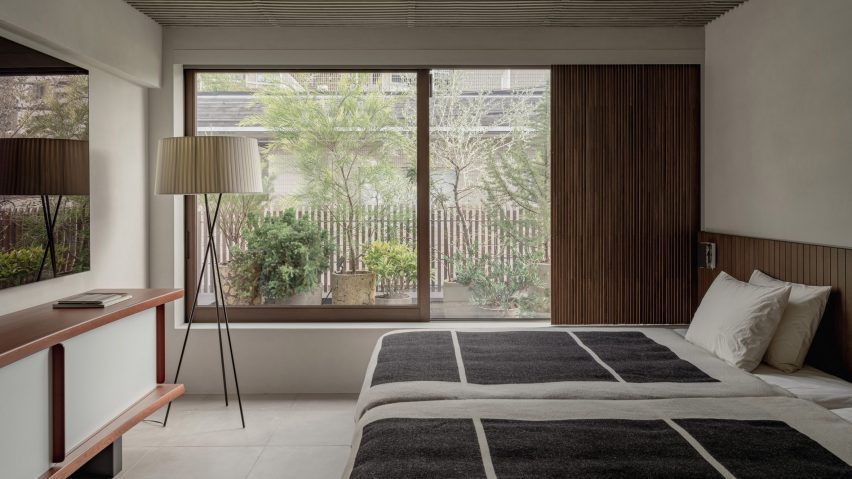
Wooden louvres create "subtle seclusion" at Tokyo house by Keiji Ashizawa Design
Japanese architect Keiji Ashizawa referenced louvres on townhouses in Kyoto when designing the concrete House in Aoyama, which is intended to foster a sense of privacy.
Located in Tokyo's central Aoyama area, the home is designed for a family with a child and two dogs.
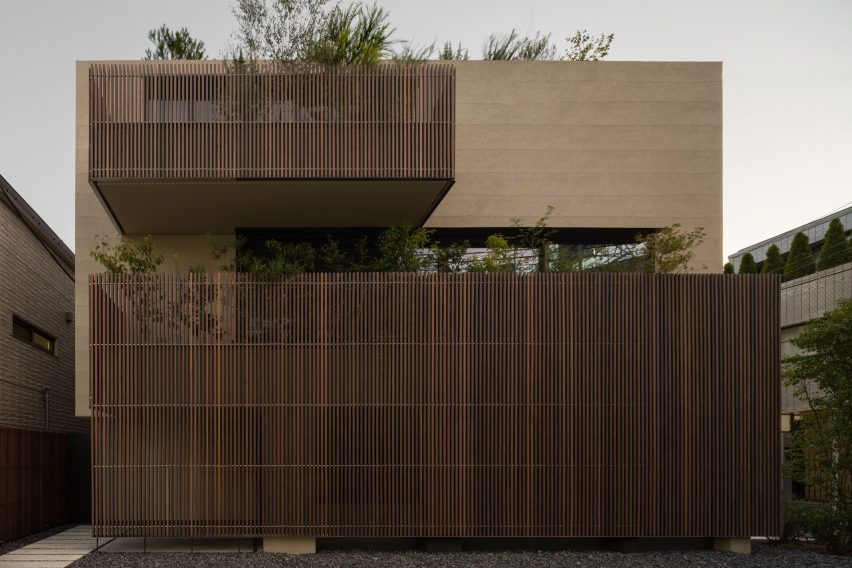
House in Aoyama's location at a busy intersection led Keiji Ashizawa Design to create a design that would offer its owners privacy, which informed the choice of concrete as the building material.
"We had to choose a material resilient to acoustic disruption and vibration for the urban context," studio founder Keiji Ashizawa told Dezeen. "Considering the need for a basement, rooftop, and balcony, we picked concrete as the best fit."
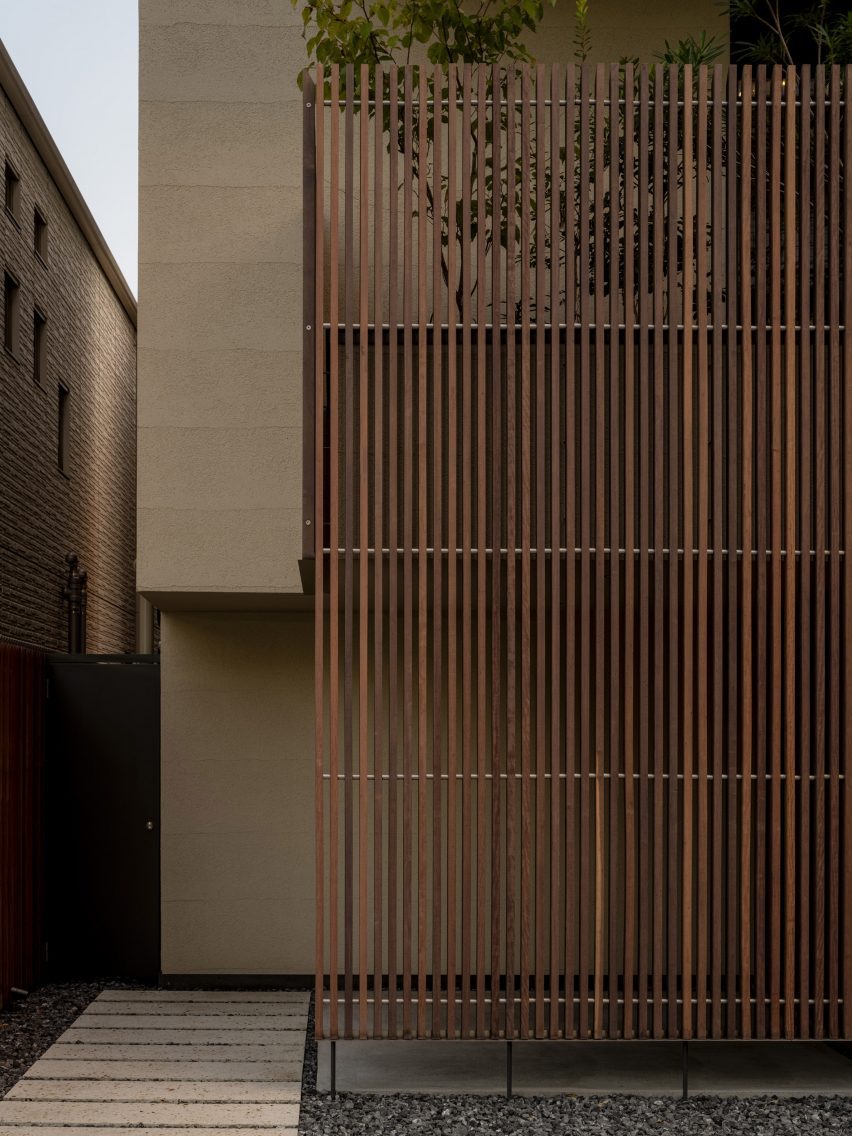
Tall wooden louvres shade the entrance of the four-storey house and its balcony, helping to shield it from neighbours and passersby.
"Louvres create subtle seclusion within the urban setting with a soft ambience, often seen in traditional townhouses in Kyoto," Ashizawa explained. "They serve both as a privacy screen and light filter."
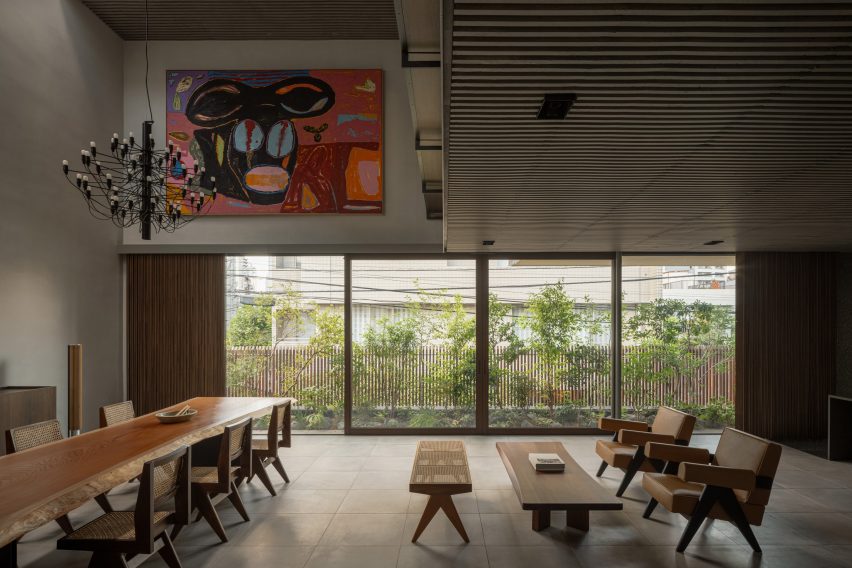
The studio used a tropical hardwood to create the louvres.
"To achieve a sleek and slender design in the delicate louvres, we chose Itauba wood, a tropical hardwood known for its water resistance and strength, making it ideal for thin and long parts," the architect said.
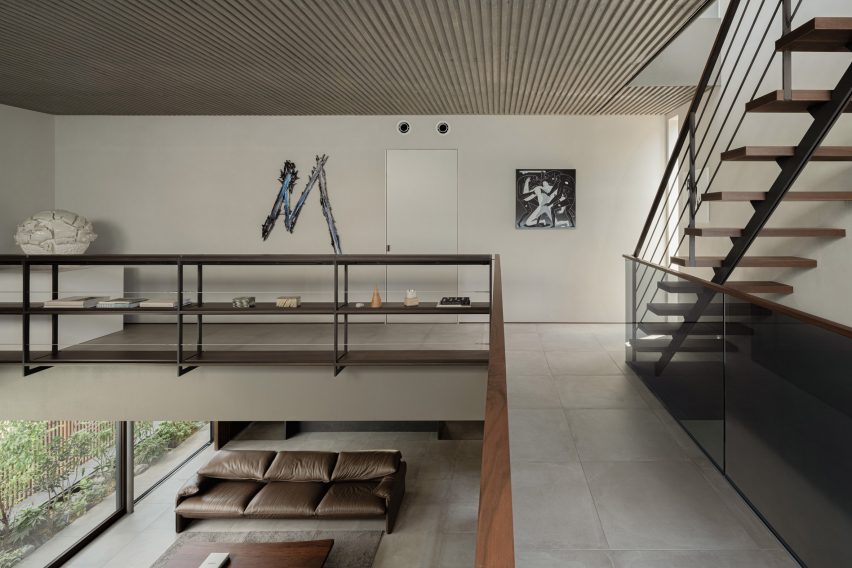
Inside House in Aoyama, the concrete structure is left exposed but given a variety of different finishes, including ribbed ceilings and washed and blasted walls.
"Concrete is exposed throughout the interior, contrasting with the insulated exterior," Ashizawa said.
"We curated a palette of finishes: raw concrete on the entrance ceiling, ribbed textures for acoustic enhancement in the living room, water-washed concrete in transitional spaces such as the entrance and stairs, and shot-blasted concrete in wet zones like the kitchen."
Bedrooms are located on the first and third floors of House in Aoyama, while the second floor holds the living and dining room.
The floors are connected by a winding wooden staircase, which combines with wooden furniture to add a more organic feel to the house and contrast the stark concrete.
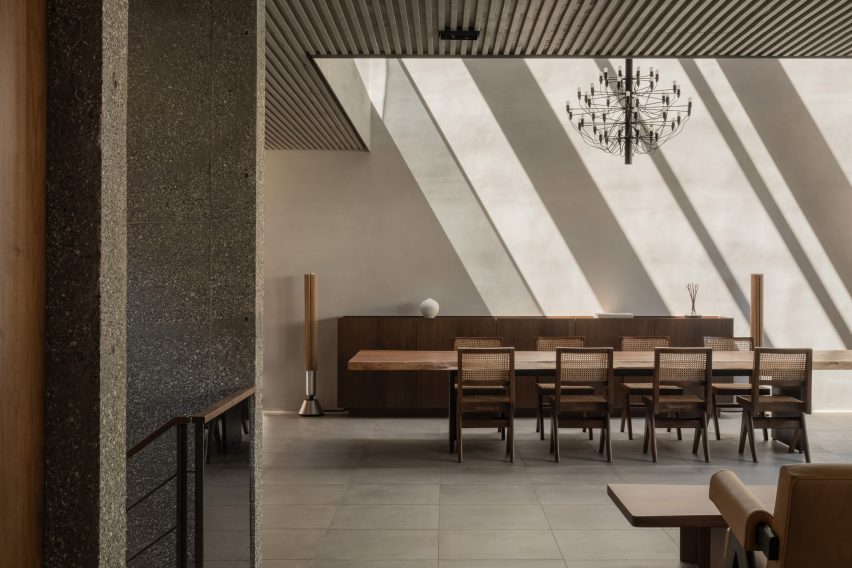
Keiji Ashizawa Design planned the house to create space for the clients' art collection, with walls in neutral hues functioning as a backdrop.
The studio also wanted to fill the home with natural light and added a skylight to illuminate the interior.
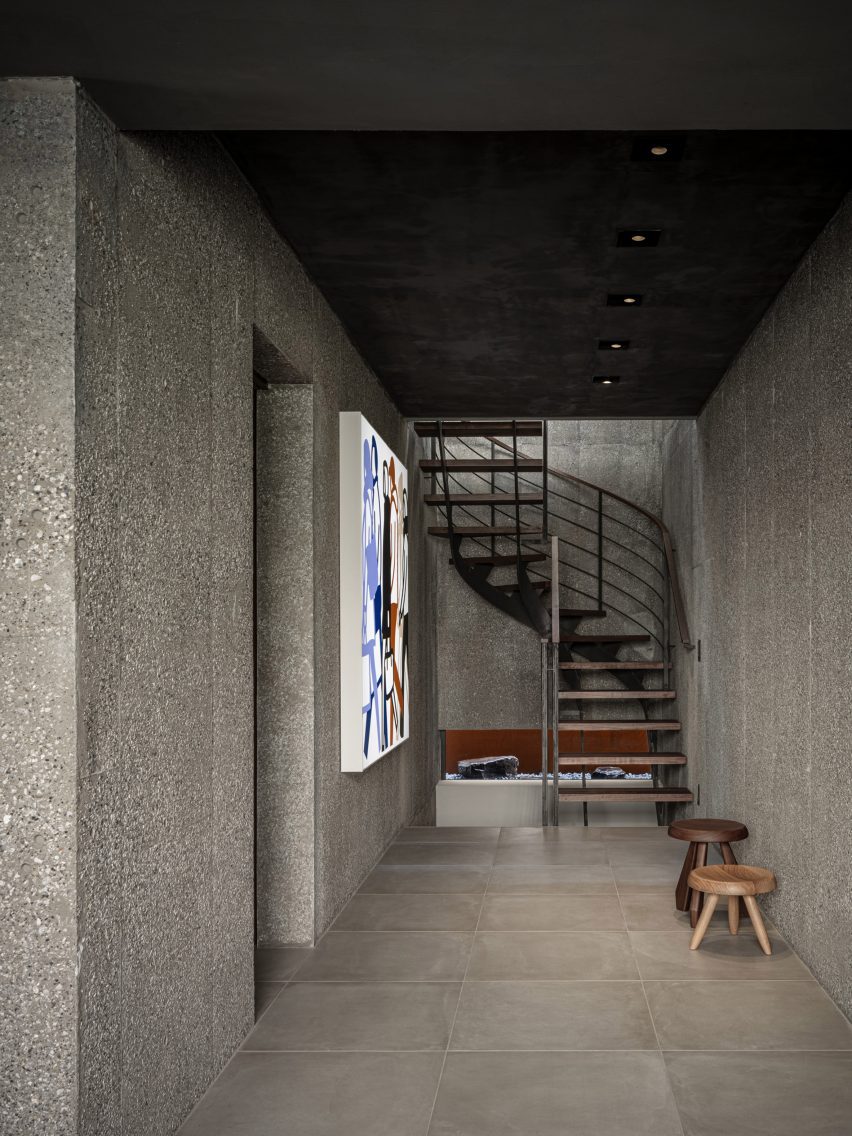
"The blend of soft natural light filtering through the louvres and dramatic illumination from the toplight enhances the living experience," Ashizawa said.
"The gentle light creates a serene ambience for everyday life, while the toplight adds a dynamic, poetic glow to the space – transforming it into a luminous sanctuary within a bustling city."
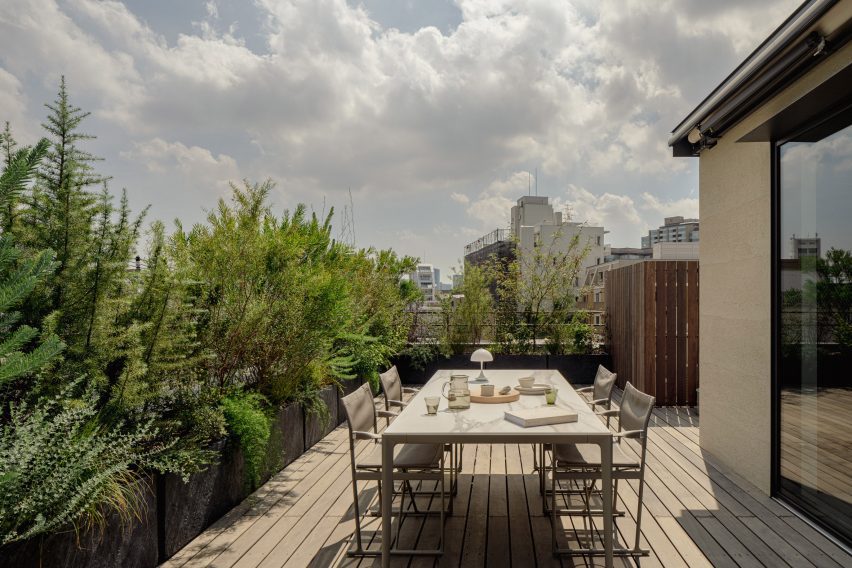
House in Aoyama is complete with a basement and a tree-planted rooftop designed as a "garden in an urban residence", intended to be used for relaxation and socialising.
"The design blends urban architectural principles with a desire to create a comfortable living environment," Ashizawa concluded. "We wanted to craft an urban retreat within the heart of Tokyo."
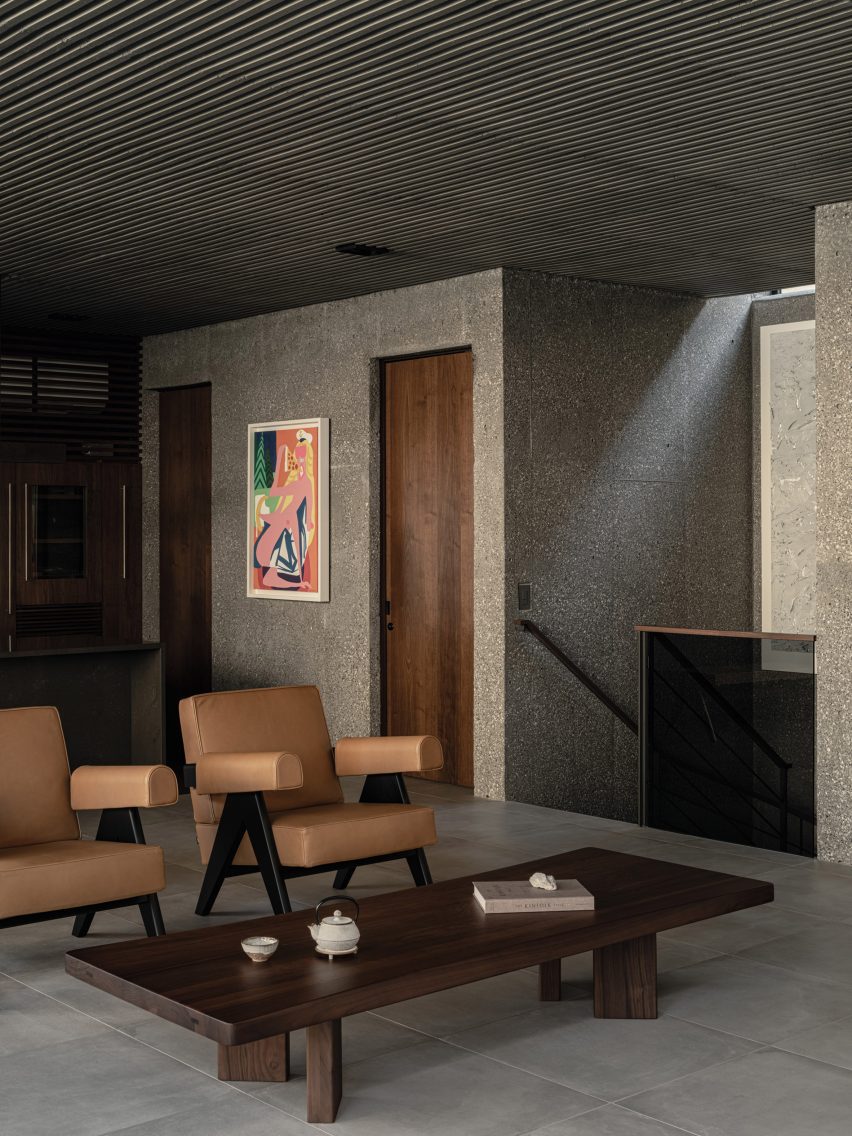
Other recent residential projects by Keiji Ashizawa Design include a minimalist Tokyo home and an apartment decorated with wooden art pieces.
The photography is by Tomooki Kengaku.
Project credits:
Architect: Keiji Ashizawa Design
Project architect: Keiji Ashizawa / Rie Honjo
Structural engineer: Tetsuya Tanaka Structural Engineers
Construction: Matsumoto Corporation